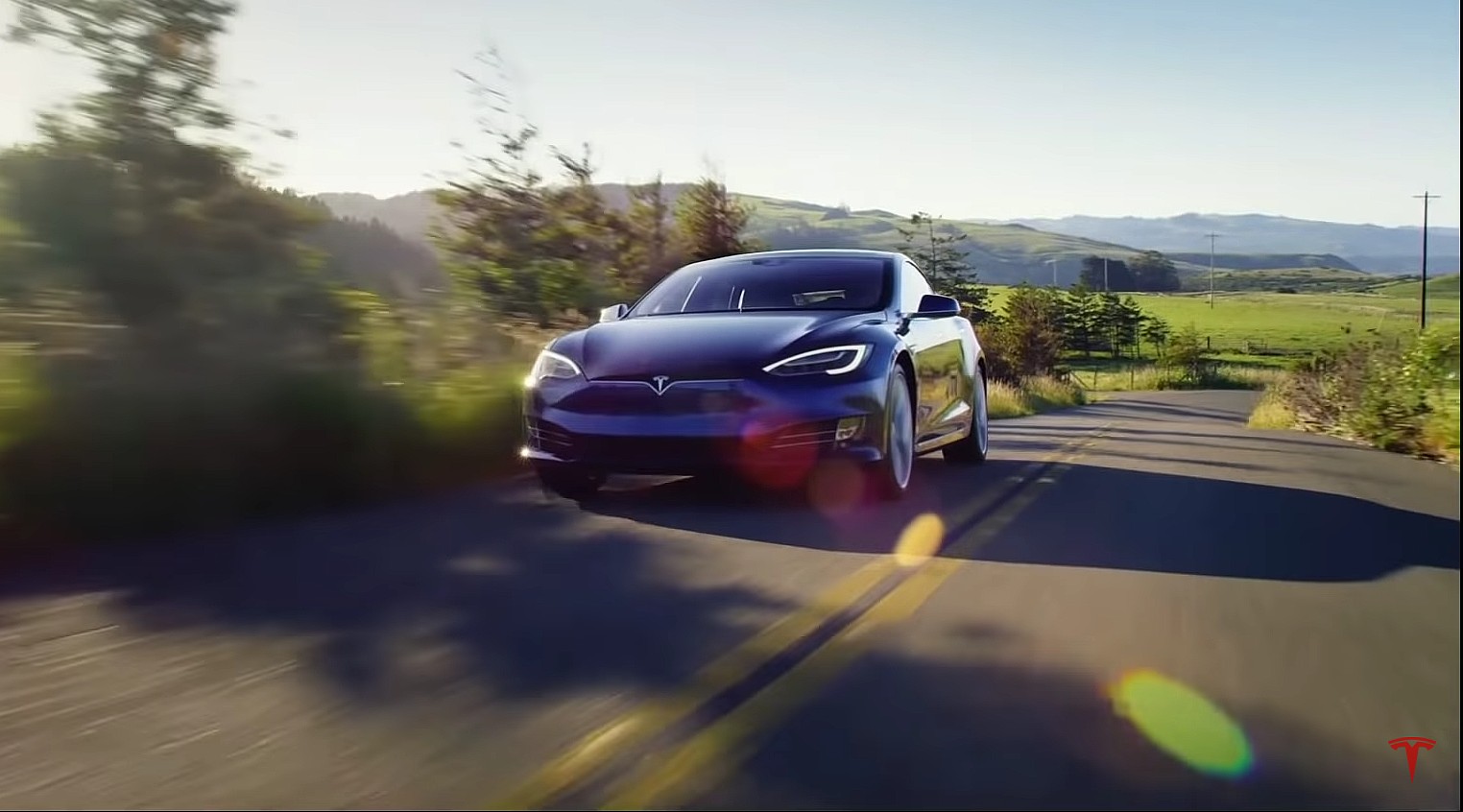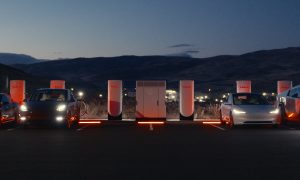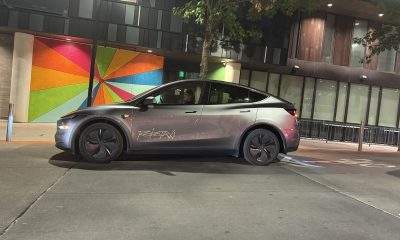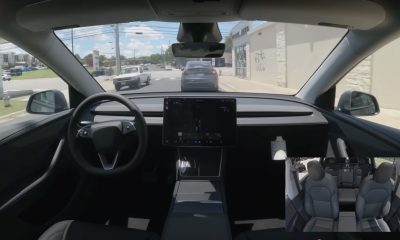Tesla Model S is closing in on 400 miles of range per charge. With this update, Tesla has definitively extended its lead in the EV market, putting it far ahead — at least from a range perspective — against its biggest competitors. What’s rather interesting is that the Model S’ 390-mile range is just the tip of the iceberg.
Being a constantly-innovating company, it’s difficult to put the finger on the generations of vehicles that Tesla releases. Yet one look at the company’s upcoming electric cars and one would know that its next vehicles will feature next-generation technology. The Model Y, for example, is built from the company’s experiences with the Model 3, and pictures of the all-electric crossover in the assembly line hint that its casting may be quite unique. Tesla will likely not experience as many challenges ramping the Model Y compared to its previous vehicles, and this is likely due to the company’s experience.
There’s the Semi and the Cybertruck as well, both of which are large vehicles that would otherwise require a ton of batteries to get their estimated range. Yet in the case of the Cybertruck, the vehicle will be offering over 500 miles of range for less than $70,000. How Tesla will accomplish this remains to be seen, but Global Equities Research analyst Trip Chowdhry noted that the Cybertruck is on a “completely different technology orbit” after taking a test ride in the all-electric truck at Tesla’s Fremont factory.
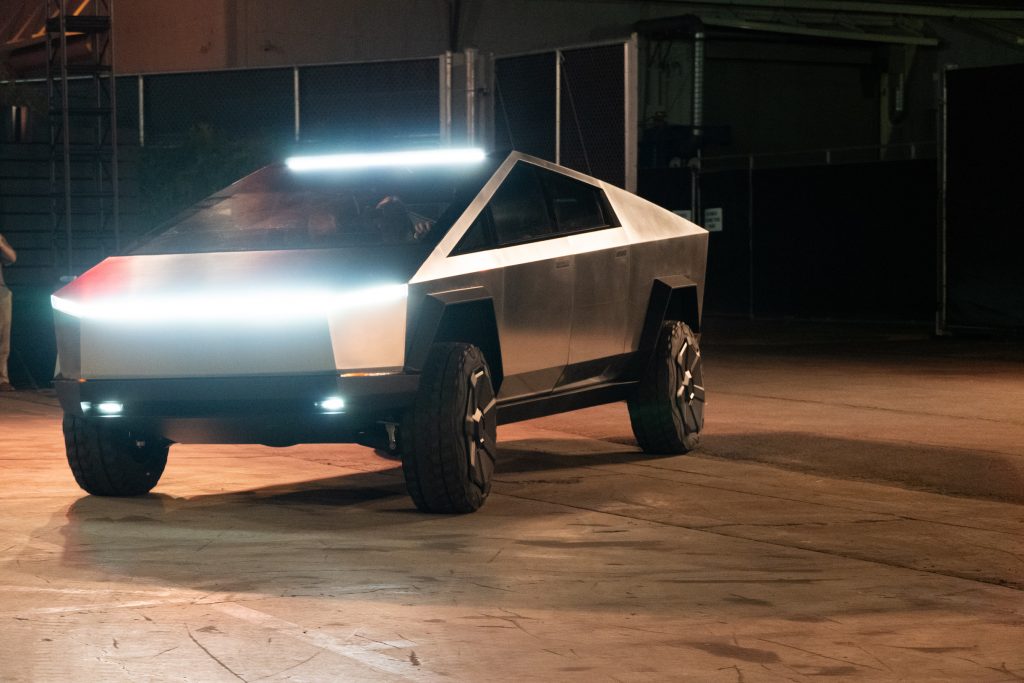
Some of these improvements are already coming soon. Later this year, Tesla is expected to release the Model S’ Plaid Powertrain variant, which will be track-capable and boast an insane amount of power with its tri-motor setup. Elon Musk noted recently on Twitter that the Plaid Model S has “absurd” performance, though the electric car maker will ensure that the vehicle still gets enough range. This comment may seem like a typical Elon Musk update, but it shows a lot about Tesla’s experience as a veteran electric car maker.
Making an electric car is not easy. Making a great electric car is twice as difficult. This is something that veteran automakers are now learning, with each vehicle that they release. Premium EVs seem to be the ones learning this lesson the hardest, especially as otherwise great cars like the Audi e-tron and the Jaguar I-PACE end up being bogged down by issues such as range. Yet among carmakers and “Tesla Killers” that have come out, the Porsche Taycan seems to be the best example of this experience gap.
The Porsche Taycan is a beautifully-designed electric sports car, and it works like one. It’s top-tier variant, the $185,000 Taycan Turbo S, is arguably the only vehicle that can beat a Raven Model S Performance on the drag strip fair and square. Yet for all its speed and power, the Taycan suffers from poor efficiency, as evidenced by the Turbo S’ 192-mile EPA rated range. Granted, tests from motoring publication Car and Driver suggest that the Taycan’s range is more tuned for Autobahn driving, but the gap between the vehicle and the Model S is very evident. This becomes even more notable when one considers that both cars’ battery packs are similarly-sized.
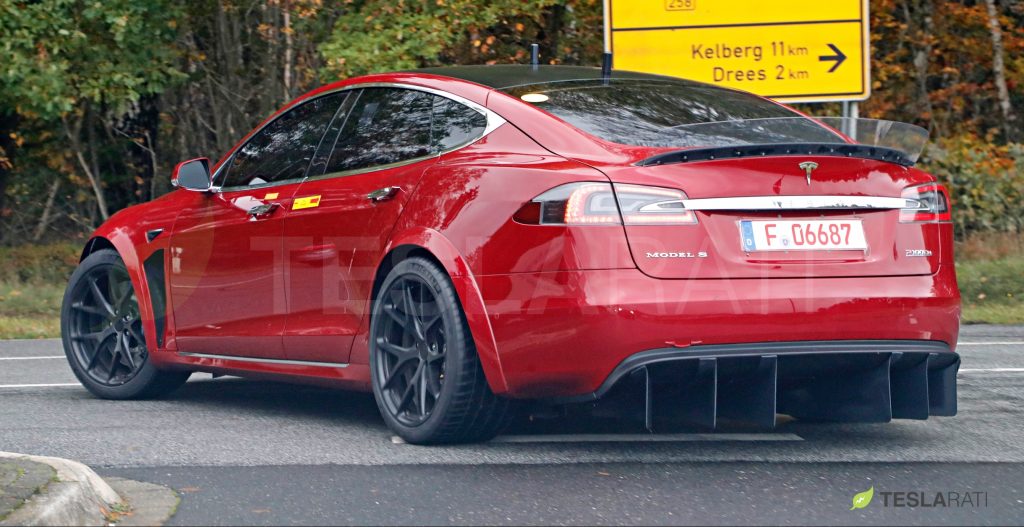
The Model S’ Long Range Plus update means that through incremental improvements on electric car batteries, Tesla is now able to draw out 390 miles out of a 100 kWh pack. That’s just about 20 miles short of Rivian’s 400-mile trucks, and those vehicles are equipped with a 180 kWh battery pack. This matters a lot, and this is a benchmark that will probably take a few years to beat.
During Porsche’s Annual Press Conference last year, the company’s executives focused a lot of their discussions on the Taycan, whose development represented a multi-billion-dollar initiative for the company. Following the main conference, I was fortunate enough to be part of a group of reporters who were able to get a brief Q&A session with Porsche Board Member for Sales and Marketing Detlev Von Platen. When it was my turn to ask a question, I inquired about Porsche’s strategy about the Taycan’s range, and how the company plans to prevent the vehicle from being the electric equivalent of a gas guzzler.
The Board Member’s response did not directly address my inquiry, though he did emphasize that Porsche is no neophyte with battery tech due to its efforts with high-performance hybrid sports cars like the 918 Spyder. This is a fair point to make, of course, though looking at the Taycan’s range, it appears that the company still needs a few more iterations of its flagship electric car before it can expertly balance performance and range in a pure EV. The Tesla Model S Plaid is coming to establish itself as the undisputed king of consumer EVs, after all. If Elon Musk’s words are any indication, it would be a triple-motor monster with frighteningly quick acceleration and a range that’s still close to 400 miles.
That’s going to be a far tougher rival than the Tesla Model S Performance.
Elon Musk
Tesla investors will be shocked by Jim Cramer’s latest assessment
Jim Cramer is now speaking positively about Tesla, especially in terms of its Robotaxi performance and its perception as a company.

Tesla investors will be shocked by analyst Jim Cramer’s latest assessment of the company.
When it comes to Tesla analysts, many of them are consistent. The bulls usually stay the bulls, and the bears usually stay the bears. The notable analysts on each side are Dan Ives and Adam Jonas for the bulls, and Gordon Johnson for the bears.
Jim Cramer is one analyst who does not necessarily fit this mold. Cramer, who hosts CNBC’s Mad Money, has switched his opinion on Tesla stock (NASDAQ: TSLA) many times.
He has been bullish, like he was when he said the stock was a “sleeping giant” two years ago, and he has been bearish, like he was when he said there was “nothing magnificent” about the company just a few months ago.
Now, he is back to being a bull.
Cramer’s comments were related to two key points: how NVIDIA CEO Jensen Huang describes Tesla after working closely with the Company through their transactions, and how it is not a car company, as well as the recent launch of the Robotaxi fleet.
Jensen Huang’s Tesla Narrative
Cramer says that the narrative on quarterly and annual deliveries is overblown, and those who continue to worry about Tesla’s performance on that metric are misled.
“It’s not a car company,” he said.
He went on to say that people like Huang speak highly of Tesla, and that should be enough to deter any true skepticism:
“I believe what Musk says cause Musk is working with Jensen and Jensen’s telling me what’s happening on the other side is pretty amazing.”
Tesla self-driving development gets huge compliment from NVIDIA CEO
Robotaxi Launch
Many media outlets are being extremely negative regarding the early rollout of Tesla’s Robotaxi platform in Austin, Texas.
There have been a handful of small issues, but nothing significant. Cramer says that humans make mistakes in vehicles too, yet, when Tesla’s test phase of the Robotaxi does it, it’s front page news and needs to be magnified.
He said:
“Look, I mean, drivers make mistakes all the time. Why should we hold Tesla to a standard where there can be no mistakes?”
It’s refreshing to hear Cramer speak logically about the Robotaxi fleet, as Tesla has taken every measure to ensure there are no mishaps. There are safety monitors in the passenger seat, and the area of travel is limited, confined to a small number of people.
Tesla is still improving and hopes to remove teleoperators and safety monitors slowly, as CEO Elon Musk said more freedom could be granted within one or two months.
News
Tesla launches ultra-fast V4 Superchargers in China for the first time
Tesla has V4 Superchargers rolling out in China for the first time.

Tesla already has nearly 12,000 Supercharger piles across mainland China. However, the company just initiated the rollout of the ultra-fast V4 Superchargers in China for the first time, bringing its quick-charging piles to the country for the first time since their launch last year.
The first batch of V4 Superchargers is now officially up and running in China, the company announced in a post on Chinese social media outlet Weibo today.
The company said in the post:
“The first batch of Tesla V4 Superchargers are online. Covering more service areas, high-speed charging is more convenient, and six-layer powerful protection such as rain and waterproof makes charging very safe. Simultaneously open to non-Tesla vehicles, and other brands of vehicles can also be charged. There are more than 70,000 Tesla Superchargers worldwide. The charging network layout covers 100% of the provincial capitals and municipalities in mainland China. More V4 Superchargers will be put into use across the country. Optimize the charging experience and improve energy replenishment efficiency. Tesla will accompany you to the mountains, rivers, lakes, and seas with pure electricity!”
The first V4 Superchargers Tesla installed in China are available in four cities across the country: Shanghai, Zhejiang, Gansu, and Chongqing.

Credit: Tesla China
Tesla has over 70,000 Superchargers worldwide. It is the most expansive and robust EV charging network in the world. It’s the main reason why so many companies have chosen to adopt Tesla’s charging connector in North America and Europe.
In China, some EVs can use Tesla Superchargers as well.
The V4 Supercharger is capable of charging vehicles at speeds of up to 325kW for vehicles in North America. This equates to over 1,000 miles per hour of charging.
Elon Musk
Elon Musk hints at when Tesla could reduce Safety Monitors from Robotaxi
Tesla could be reducing Safety Monitors from Robotaxi within ‘a month or two,’ CEO Elon Musk says.

Elon Musk hinted at when Tesla could begin reducing Safety Monitors from its Robotaxis. Safety Monitors are Tesla employees who sit in the front passenger seat during the driverless rides, and are there to ensure safety for occupants during the earliest rides.
Tesla launched its Robotaxi fleet in Austin last Sunday, and after eight days, videos and reviews from those who have ridden in the driverless vehicles have shown that the suite is safe, accurate, and well coordinated. However, there have been a few hiccups, but nothing that has put anyone’s safety in danger.
A vast majority — close to all of the rides — at least according to those who have ridden in the Robotaxi, have been performed without any real need for human intervention. We reported on what was the first intervention last week, as a Safety Monitor had to step in and stop the vehicle in a strange interaction with a UPS truck.
Watch the first true Tesla Robotaxi intervention by safety monitor
The Tesla and UPS delivery truck were going for the same street parking space, and the Tesla began to turn into it. The UPS driver parallel parked into the spot, which was much smaller than his truck. It seemed to be more of an instance of human error instead of the Robotaxi making the wrong move. This is something that the driverless cars will have to deal with because humans are aggressive and sometimes make moves they should not.
The Safety Monitors have not been too active in the vehicles. After all, we’ve only seen that single instance of an intervention. There was also an issue with the sun, when the Tesla braked abnormally due to the glare, but this was an instance where the car handled the scenario and proceeded normally.
With the Robotaxi fleet operating impressively, some are wondering when Tesla will begin scaling back both the Safety Monitors and Teleoperators that it is using to ensure safety with these early rides.
CEO Elon Musk answered the inquiry by stating, “As soon as we feel it is safe to do so. Probably within a month or two.”
As soon as we feel it is safe to do so.
Probably within a month or two. We continue to improve the Tesla AI with each mile driven.
— Elon Musk (@elonmusk) June 30, 2025
Musk’s response seems to confirm that there will be fewer Teleoperators and Safety Monitors in the coming months, but there will still be some within the fleet to ensure safety. Eventually, that number will get to zero.
Reaching a point where Tesla’s Robotaxi is driverless will be another significant milestone for the company and its path to fully autonomous ride-sharing.
Eventually, Tesla will roll out these capabilities to consumer-owned vehicles, offering them a path to generate revenue as their car operates autonomously and completes rides.
For now, Tesla is focusing on perfecting the area of Austin where it is currently offering driverless rides for just $4.20 to a small group of people.
-

 News5 days ago
News5 days agoTesla Robotaxi’s biggest challenge seems to be this one thing
-

 News2 weeks ago
News2 weeks agoTesla confirms massive hardware change for autonomy improvement
-

 Elon Musk2 weeks ago
Elon Musk2 weeks agoElon Musk slams Bloomberg’s shocking xAI cash burn claims
-

 News2 weeks ago
News2 weeks agoTesla China roars back with highest vehicle registrations this Q2 so far
-

 News2 weeks ago
News2 weeks agoTesla features used to flunk 16-year-old’s driver license test
-

 News2 weeks ago
News2 weeks agoTexas lawmakers urge Tesla to delay Austin robotaxi launch to September
-

 News2 weeks ago
News2 weeks agoTesla dominates Cars.com’s Made in America Index with clean sweep
-

 News2 weeks ago
News2 weeks agoTesla’s Grok integration will be more realistic with this cool feature

